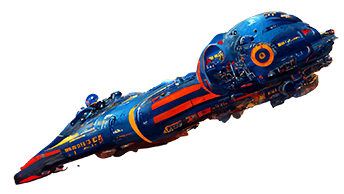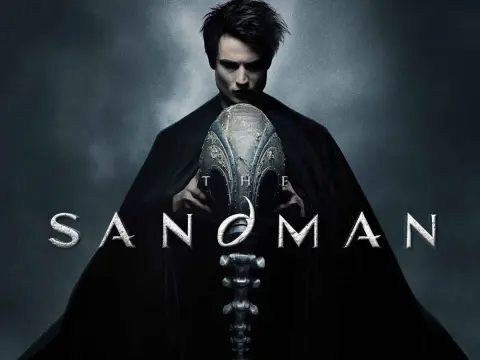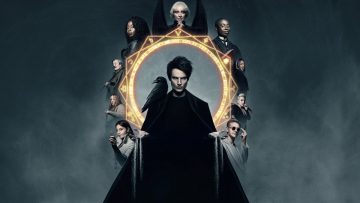I was wondering, as a lot of people thought this was unfilmable, what sort of notes did you get from Netflix? Were there things that were off limits or things that they were worried about?
Neil Gaiman: It was unfilmable, but it was unfilmable because everybody tried to take the 3,000 pages of Sandman and make a two hour film of it and that’s why it was unfilmable. You never wound up with anything that was satisfying, interesting or worked. There was just too much. It was like trying to put the ocean into a glass.
What we did, as Allan and David Goya and I planned to do Sandman, [we] did an event at Warner Brothers where we explained what we were going to do, which would be Sandman, to a bunch of different streamers. A week later, after frenzied bidding, Netflix had won it and then we did Sandman. So it wasn’t like they were like, “Aha. Now we have won the Sandman. We would like you to do this, this and this and this. It was like, no, they bid for the Sandman that we were going to be making.
And then they just left you to it?
Neil Gaiman: They were really helpful. They were really great. Just as Warner Brothers TV were really helpful and really great. Certainly, we were making this during the height of the pandemic.
We shot episode three in a London in full lockdown, in which the only people allowed out were movie crews for some reason, because we were deemed essential. So in episode three, there are, if you look carefully at the screen, there are no cars moving in the background. There are no tiny distant extras or anything.
Yeah. I think I’ve heard about that when it was happening and it was that really dead zone.
Neil Gaiman: Absolutely. It was completely a dead zone. So everybody, we worked so closely with Netflix and with Warner’s to get this thing made, but they weren’t ever trying to turn it into anything else. I don’t ever recall a time where they said, “Hey, we think that, wouldn’t it be good if Death did this or Dream said that.” That stuff just didn’t happen.
Well, given that you weren’t really asked to make that many changes, there are still a relatively large amount of structure changes and things like that. The biggest thing that stuck out to me when I was watching was introducing Matthew earlier, so that he’s on that journey with Dream while he’s on that first quest. Why was he brought in at that point? Is it because he needed someone to kind of-
Neil Gaiman: Episode four of Sandman in the comic is narrated by Dream. You are inside his head. He is your narrator. And it’s a first person, “I’m going to Hell. I’m scared. All of this stuff is happening.” Matthew was created to give Dream somebody to talk to. He was created to allow conversation to happen. He was created so that he could stand in for the audience And go, “Who is this?”
We talked early on, “Are we going to do narration? Are we going to be in Dream’s head?” And stuff. And we wound up being in Dream’s head just a little bit for episode one. But after that it was like, “If we’re not going to do that, then why don’t we move Matthew’s arrival up earlier?” And Matthew is there, basically, for a little bit in episode three, in episode four. Episode five is sort of not really Matthew and there’s no Matthew in episode six. So then at the beginning of the Doll’s House, he’s there, but also now he’s been introduced and set up.
In a way that he wouldn’t have been in the first episode.
Yeah. It was just one of the changes that stuck out to me as interesting.
Allan Heinberg: It also played nicely because we had introduced Jessamy into the first episode.
And watching Dream deal with grief… There are new ways to get to know Morpheus without him telling you this is what I’m doing.
Those two animal deaths in the first two episodes were shocking, hard-hitting in a way that really made Morpheus feel very softer to me that he feels when you start reading the book. I guess why that choice as well? Like why soften him-
Allan Heinberg: You just said it. Here’s a character who in the book is wrapped in mystery and because our strategy for the show, making this Morpheus’s story, we wanted the audience to fall in love with him and really identify his struggle and identify with his struggle and make him more relatable.
So those were very emotional ways to get to know him. A character who seems shut down and removed, but who really is feeling so much that if you let any of that out, there would be chaos.
I have not seen the screeners, so I’m behind everybody else. What I did see is Good Omens, your translation to that, was amazing. And I love that show. So I’m anticipating loving this one just as much, but you guys were hitting on some of the changes that you’ve made. Is there anything in particular that translated better on television than it did on the page that you were really excited about exploring?
Neil Gaiman: I love the shape of the serial killers’ convention stuff done as television, because I didn’t have that number of pages to tell my story in the Doll’s House. And what I love is that I feel like the serial killers’ convention and Rose’s story and the whole of a Doll’s House has a lot more… You get to set things up in ways that I just didn’t have the room to set things up in the story. I love the fact that little Jed, her brother, is all the way through the story, but points where, in the comic I actually went, “I want to bring him into this.” And then went, “I can’t, I don’t have the room with everything I need to do. And I’m already at 36 pages on this episode.”
So he was locked in the trunk of the car for the episode, for the issue in the comics, because I couldn’t do anything with him, but we had more room and we have more space. So now we can bring him in and he’s somebody else for the audience to care about. And you watch him in the Corinthian bonding and it allows you to go, “Okay, well, really the Corinthian, on the one hand, he is a murderous spirit of serial killing who is eating people’s eyeballs. And on the other hand, he is what he is and he just wants to survive and he’s not actually evil. This is what he was made to be.”
I mean, some of the characters then, because translating that from the screen, for example, Matthew, the Crow, Fiddler’s Green, how do you decide prosthetics, CGI, practical?
Allan Heinberg: Well, Matthew was a real raven and Jessamy was a real crow, a pied crow for as much as we could use. All that was shot practically with real birds. Then the CGI was all modeled on those real birds and hopefully you can’t tell which is which. So that was really important to us that we tried to do everything as practically as possible. And then the VFX, CGI stuff is last resort.
Neil Gaiman: I would say that Jessamy is probably 80% real pied crow, 15% puppet and 5% CGI, something like that. But the CGI is mainly there just to tie moments together and to get the bird in and out of shot. One of the things though that I think is so important about Sandman was making things happen practically. It’s like when Morpheus is with Gregory, he isn’t acting with a tennis ball on a stick. He is acting with a puppeteer, holding a Gregory head of the right size and the puppeteer is acting and the head is being active.
Allan Heinberg: We were crying on set. And it’s a puppet, it’s a puppet head and we’re crying because the scene is so… But Neil’s right, if that hadn’t made us cry, there’s no way that…
Neil Gaiman: I love that it made you cry, but it made you cry because it made us cry because we care.











